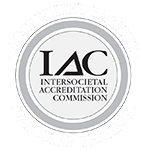
The most typical indication of lower-extremity peripheral artery disease is severe muscular cramps in the pelvis, quadriceps, or legs, which occur while walking, stair climbing, or doing other physical activities.
Once you stop exercising, the discomfort associated with PAD usually subsides within a few minutes. However, this may take several minutes. Muscles that are actively working need increased blood flow. Muscles that are resting may get by with less.
If blood flow is restricted as a result of plaque in the arteries, the muscles will not get enough oxygen and nutrients to satisfy their needs during activity. During activity, the muscles experience cramping discomfort (also known as intermittent claudication), which serves as a signal to the body that they are not getting enough blood to satisfy the increasing demand.
Many persons with PAD have no symptoms or misinterpret their symptoms as being caused by something else.
Click Here to Take a PAD Self Assessment
Other signs and symptoms of PAD are as follows:
- Chronic leg discomfort that persists even after you cease physical activity
- Wounds on the feet or toes that are not healing or are healing incredibly slowly
- Gangrene, often known as dead tissue
- A significant drop in the warmth of your lower leg as contrasted to the warmth of your other leg or the rest of your body
- Insufficient nail growth on the toes or insufficient hair development on the legs
- Erectile dysfunction, particularly in diabetic males
- Recognizing the causes of leg discomfort
Leg discomfort is often dismissed as a typical part of the aging process. You may believe you have arthritis, sciatica, or just "stiffness" as a result of getting older. Consider the cause of your discomfort in order to get an appropriate diagnosis. Leg discomfort caused by PAD arises in the muscles rather than the joints.
Diabetes patients may mistake PAD pain for neuropathy, which is a typical diabetic symptom that manifests as a burning sensation in the feet or legs. Any kind of chronic pain should be discussed with a healthcare expert, who should be able to precisely define the discomfort. In the event that you have any of the risk factors for PAD, you should consult with your healthcare provider about the condition even if you are not experiencing symptoms.
PAD Diagnosis and Treatment
The following are different tests that your doctor may use to detect peripheral artery disease:
Examine Your Physical Condition
In the course of a routine physical, your physician may discover signs of PAD, such as a sluggish or nonexistent pulse underneath a constricted artery, whooshing noises over your arteries which can be noticed with the use of a stethoscope, indication of inadequate wound healing in the area at which your blood flow is constrained, and decreased blood pressure in the body part that is impacted.
Angular Index between the Ankle and the Brachial Bone (ABI)
A typical test for the diagnosis of PAD is an Ankle Brachial Index (ABI). It measures the difference between the blood pressure in your lower leg and the blood pressure in your forearm.
In order to get a blood pressure measurement, your doctor will utilize a standard blood pressure cuff in conjunction with an ultrasound instrument that will analyze both blood pressure and flow.
To determine the location and severity of the constricted arteries when walking on a treadmill, you might have measurements taken beforehand and shortly after exercise.
Ultrasound
Ultrasonography methods such as Doppler ultrasound, which measures blood flow via your blood vessels, may assist your doctor in evaluating your blood vessels and identifying blocked or restricted arteries.
Angiogram
This test, which makes use of a tracer that is injected into your blood vessels, enables your doctor to see blood flow through your arteries as it occurs. Imaging methods like X-rays, magnetic resonance angiography (MRA), and computed tomography angiography (CTA scan) may be used to track the passage of the dye.
This diagnostic procedure involves inserting a short hollow tube (catheter) into an artery in your groin and directing it to the afflicted location, where the dye is then administered. This form of angiography enables your doctor to fix a blocked blood artery at the time of the first diagnostic procedure. A restricted section of a blood artery may then be enlarged by inserting and inflating a small balloon, or by providing medicine that enhances blood flow, once it has been identified.
Blood Tests are Performed
A sample of your blood may be used to examine your cholesterol and triglyceride levels, as well as to rule out diabetes in certain cases.
For more information, click below to contact us.








